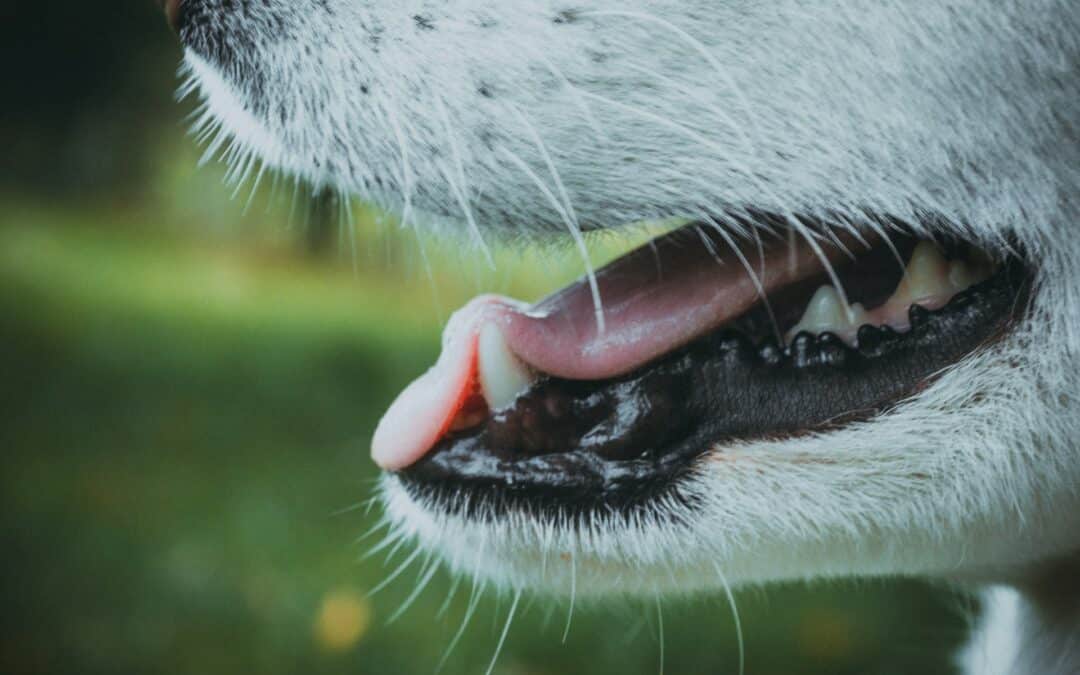As veterinary professionals, we always recommend brushing your pet’s teeth once a day and bringing them to our office for a dental checkup once a year. Dogs and cats can suffer from painful tooth decay and gum disease, so dental checkups are an important part of keeping your pet healthy and happy.
During a checkup, we’ll examine your pet’s teeth carefully and let you know if they need any further treatment. We may need to clean their teeth to remove plaque and tartar, use radiography to check for potential problems, or perform dental procedures like fillings or tooth extractions.
Some dental treatments require the use of anesthesia, but don’t worry—your pet will be perfectly safe. We explain what happens during veterinary dental procedures in more detail below.
Common Dental Problems in Pets
Untreated dental problems can cause pain and discomfort, make your pet avoid food or play, and even increase their chances of getting an infection. Two of the most common dental issues pets experience are tooth decay and gum disease. Chipped or cracked teeth are another common problem, especially for dogs.
Gum Disease and Tooth Decay
Pets can’t brush their own teeth, and if you don’t do it for them, plaque can build up quickly. When it does, it hardens into tartar, a substance that can only be removed during dental cleanings. Plaque and tartar cause tooth decay and irritate the gums. Without regular cleanings, pets can suffer extreme pain and even tooth loss.
Chipped or Broken Teeth
Pets can break their teeth by biting or gnawing on something too hard, like a bone or a stick. Or, if your pet already has tooth decay, sometimes the pressure of chewing is enough to make a tooth chip or crack. Broken teeth can cause extreme pain. The closer the chip or crack is to the sensitive inner pulp of a tooth, the worse the pain will be.
How to Tell If Your Pet Is in Pain
Animals will often instinctively hide their pain, a holdover from their ancestors’ time in the wild. Dental checkups can help you avoid this, but you also need to be able to recognize the signs of dental pain.
Warning signs of dental problems include:
- Constant bad breath
- Abnormal drooling
- Unusual chewing habits
- Dropping food from the mouth
- Lack of appetite, or refusal to eat
- Bleeding from the mouth
- Swelling of the jowls, throat, or face
- Aggression or fear when touched near the mouth
What Happens During Your Pet’s Dental Cleanings
1: Detailed Cleanings
Cleanings at the veterinarian’s office include scaling and polishing the teeth.
Dental scaling is a process that removes tartar and plaque. It is done with either a water pick (think mini pressure washer, but for teeth), or with dental tools. After scaling, your pet’s teeth get a polish.
A polish helps to ensure all the teeth have been scrubbed clean and remove any excessive debris from the scaling.
2: Radiographs
Low-level x-rays help us get a clear picture of your pet’s mouth. While their teeth might look all right on the surface, they could have problems hidden under their gums. Radiographs help us detect any underlying decay or cracks, and allow us to examine the jaw bone as well, so we can treat problems before they start causing pain.
The Use of Anesthesia for Pet Dental Care
Annual dental exams are an important part of keeping your pet from experiencing oral pain. For an x-ray exam and cleaning, your pet will undergo anesthesia. This keeps them and their vet safe while the vet gives them a detailed dental cleaning and takes radiographs of their mouth and jaws.
Due to the invasive nature of dental care, your pet will be put under anesthesia for their dental cleaning. When you go to the dentist, you understand why you are there, the discomfort you might face, and how it will help you stay healthy. Your pet, unfortunately, does not understand any of that, and may react with fear or aggression.
Anesthesia also helps your pet remain still. Sudden movements during a cleaning or dental procedure has the potential to be dangerous for your pet. They might jostle the dental instruments, causing wounds inside the mouth or knocking them against the teeth.
And cleanings alone are not enough to understand the true state of your pet’s oral health. Plaque and tartar often hide in pockets around the tooth, or under the gum line, so they’ll need x-rays, just like you do. Sedation means they remain still during their scans, so we can get a good look at what’s going on inside of your pet’s mouth.
When used appropriately and administered by a trained veterinarian, the risks associated with anesthesia lessen. Our highly trained staff take the time before, during, and after anesthesia to mitigate potential problems. And we constantly monitor your pet to make sure there are no complications.
Get Pet Dental Care from a Specialist in Gilbert
You should only trust your pet’s dental health to a professional team that specializes in veterinary dentistry. All cats and dogs need dental care, and East Valley Animal Hospital provides the very best. Contact us to make an appointment for your pet today.
Images used under creative commons license – commercial use (5/6/24). Photo by Andriyko Podilnyk on Unsplash.

